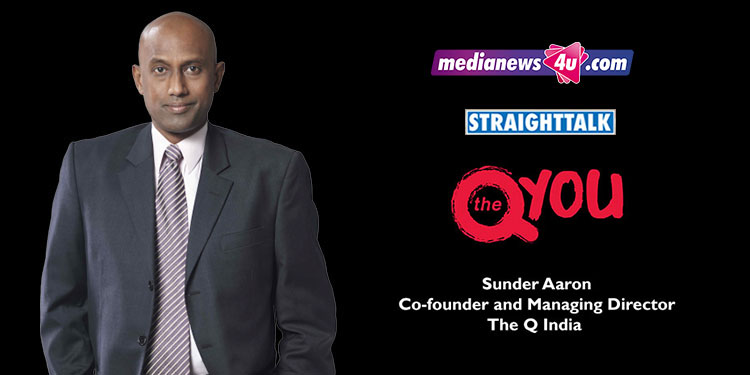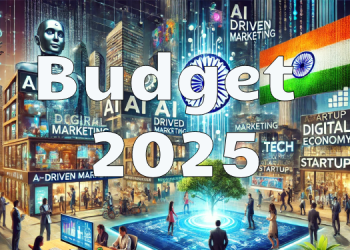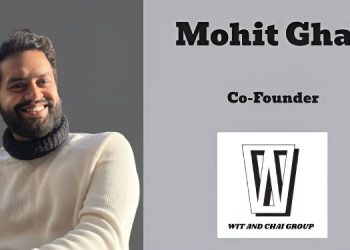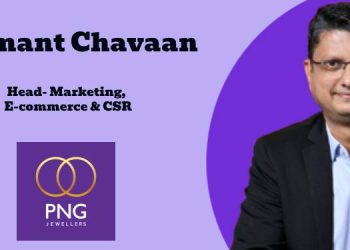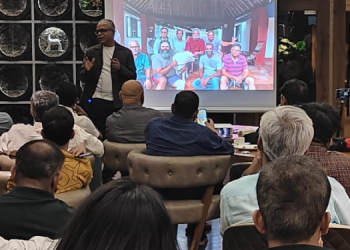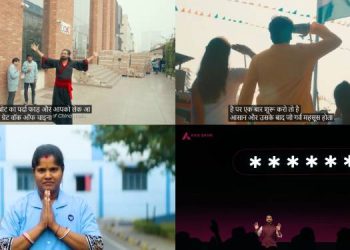QYOU Media headquartered in Canada and Los Angeles is eyeing Asia’s 2nd largest market and its burgeoning young audience with an equally exciting new proposition. They want to serve digital-first content to TV audiences.
Aaron, along with California-based QYOU Media, got their expertise in TV and cherry-picked content from digital content creators and repackaged it for linear TV viewing. Influencer created content might be scripted shows like ‘What the Folks’, and unscripted shows like ‘Unglibaaz’ or even movie content like a short film block that the company is collaborating with influencer partners and digital media houses like Pocket Aces and Culture Machine and helping their content reach newer audiences on television.
To Aaron, the demarcation between TV and digital content makes very little sense because he says, “I watch more streaming content than TV, but that doesn’t mean that I will stop my Tata Sky subscription”. He observes that in most households, both platforms co-exist, which makes it another touchpoint for young viewers to discover their content.
Even as most new media entrepreneurs are going the digital way, The Q India is taking a different approach. The Q India’s first focus is on traditional Pay TV, where it feels that this audience is still underserved. As the completely owned subsidiary of QYOU Media, the channel has been targeting the Hindi speaking audience in the age group of 20-30 years.
Aaron is currently the principal of Locomotive Global Inc. (LGI), the holding company he founded with its investors in 2012. LGI’s primary focus is to incubate and launch new India oriented businesses. LGI’s activities in India include involvement and investment into companies active in film and television development and production, programming sales and distribution, Quick Service Restaurants, and social media apps. LGI works in close association with Anderson Media Group, based in Los Angeles, on all media and entertainment-oriented activities.
Aaron is also the co-Founder and Managing Director for Q India, the division of QYOU Media which operates linear channels and digital programming services for the Indian market. The channel is currently distributed on Pay TV, mobile and OTT/Streaming platforms. Q India is a content brand dedicated to the “Young India” audience.
MediaNews4U in a conversation with Sunder Aaron, Co-founder and Managing Director, The Q India and co-founder and principal of Locomotive Global Inc. (LGI)
How’s Q’s journey in India as the fastest youth-focused network in Asia?
The Q India is more than a youth-focused channel. We are a Hindi general entertainment channel dedicated to Young Indians ranging between 20 to 30 years old. So, the difference is that while other youth channels may skew a bit younger towards the teenagers, The Q India is aimed a bit higher.
Our journey in India has been exciting and there have been many lessons learnt. India is absolutely the best television and digital market in the world for media companies, and that’s why we are actively investing in our business and our brand for India. The Q India has been available to Indian viewers for almost two years now and has evolved over time. The Q is more local than ever and is a complete purpose-built channel for Young Indians. The content and programming are for Young Indians, about Young Indians, and by Young Indians.
We are thrilled by the prospects of further growth and expansion in India, and plan regional language channel versions of The Q India in the coming months. We expect to take our lessons learned from India and apply them successfully in the rest of Asia. In fact, we have identified other markets, such as Indonesia and the Philippines that we believe will be perfect for The Q.
You have had a long association with Sony, your learning’s and have you implemented some of the broadcast learning’s on Q?
Launching and building a TV channel independently without the backing of a media company or network group is challenging anywhere in the world, but more so in India. For any upcoming independent channel, it is difficult to fully comprehend and overcome all the obstacles that prevent you from building a successful channel. You must be savvier with the allocation of resources and leveraging of partnerships than the established players. It’s a sort of independent spirit that’s required. Thankfully, my past experiences have taught me many lessons that I have been doing my best to implement with The Q India. Apart from the practical tactics for operating a channel (distribution, programming, marketing/promotions, team building etc.), there is also a healthy amount of market navigational intuition that seeps into you over time.
There are varied content providers on Q, how is production values maintained as most digitally produced content is not A+ quality as it is cheap compared to broadcast shows?
Primarily, the quality of content that we find and curate for The Q is astoundingly high. There is a prejudice that if you’re not a production house or you’re not spending a lot of money, then you can’t make high-quality film or television. The quality of content is directly influenced by the uniqueness of the concept and quality of the script than the kind of camera and lighting that is used on set. In fact, there are numerous examples of shows that have low production budgets, no stars cast, and zero special effects that have turned out exceptionally well because the other factors including scripts have been excellent.
Secondly, we have an involved and sophisticated process not only for finding content and curating it, but also for our standards and practices (S&P) and packaging. Our S&P process looks at every piece of content to make sure that it is not violating any of the broadcast regulations. Because of this process and the ever-growing amount of content that is available, we are able to skim the cream that we find and add it to The Q.
Last but not the least, since we are a general entertainment channel, we are willing to experiment with our content that has variety in composition and tone, given that it will be engaging for our viewers.
Young Indians making shows need to be given some leeway, and if our content partners are creative and their content is engaging enough, then the audience will appreciate what they have made.
Partnership deals of Q?
The Q has been successful in forging numerous important partnership relationships, primarily in distribution and content. We have amazing DTH partners in Tata Sky and Airtel Digital TV. When it comes to streaming and OTT, our partners are Zee5, Sony LIV, MX Player, and with regards to mobile/OTT, we have solid relationships with both Jio and Airtel XStream. With regards to content, our partners include leading content creators such as Arre, Nirvana Digital, Pocket Aces, Culture Machine, Spot Boye, Miss Malini, 9XM and AajTak, among others.
Your thoughts on the Indian OTT landscape as there are 30+ and growing? Some have closed shop, what are the challenges here?
Clear positioning and relevant content for the target audiences are two challenges in the Indian OTT landscape. To survive and thrive, companies must establish clear positioning in the consumers’ mind and develop a programming proposition for the streamer that is vibrant and consistent. This is vital to attract subscribers/viewers and retain them with minimal churn. Unless the consumer is very clear on the value added that a service will deliver, it will be hard for them to spend time viewing on service, let alone pay for it every month.
Talking about platforms that are free for viewers, the challenge is about measuring and monetizing that audience. At this point, a large majority of digital advertising spend is soaked up by Google (search), YouTube and Facebook (social media). While the amount of ad spends on digital media in India increased by more than 25% this year, it will be hard for agencies, advertisers and companies widen their media plans, unless we have a trusted and independent digital viewership measurement service for digital media.
For either OTT/streaming model, high investment is required to establish and build a brand, and then supply the platform with a constant flow of original content.
What are the programming strategy and the TG you are targeting?
The Q India’s proposition is simple. We’ve fashioned the channel to appeal directly to the 20-30 years old Hindi-speaking young Indians, who, we feel, are under-served in the Indian Pay-TV landscape. As a result, they are quite dispersed in their viewing habits. We want to establish The Q India as a relevant brand for that TG, a Pay-TV destination that acts as a focal point for this set of viewers. So far, we are delighted with our progress, considering how moderate we have been with consumer marketing till date. The best way to build a brand in India these days is via advertising on TV. While we are working towards investments in OOH, print and other paid media, we are blessed to have our own TV channel, which gives us a voice and a platform to build the brand upon.
Has NTO seen an increase towards digital platforms?
The New Tariff Order is meant to bring greater transparency and rationale to channel pricing and what the consumers are paying for their Pay-TV and therefore has a greater impact on subscription-based channels. Despite some early transitional challenges, I think nearly all stakeholders will benefit from NTO in the long run. While there is a trend (worldwide as well as in India) for viewers to move towards digital platforms, Pay-TV and linear channels in India are going to remain the dominant way for viewers to consume entertainment for years to come. Our strategy with The Q India is to remain a free channel that is made as widely available and as easily accessible as possible. Naturally, there will always be a growing audience for digital platforms. Therefore, an important part of our strategy is to make The Q India available on all digital platforms along with Pay TV, so that as audiences move into digital, they will be able to enjoy The Q India (a content brand they are already familiar with), wherever and however they wish.
Major challenges you foresee in the ecosystem?
A credible system for digital measurement, the ability for advertisers to begin adopting various digital advertising vehicles (aside from Google, FB and YouTube) and proliferation of broadband connectivity (aside from via mobile) are some of the challenges that I foresee.
Currently, we have 550 million wireless broadband users, of which nearly 97% are using their phones and 3% are wired users. If Jio Giga Fiber meets their ambitions, they would ultimately drive India’s wired connectivity from #134 in the World, up to #5! That is a huge challenge and an amazing opportunity for the Indian media and entertainment industry.
Clutter is also a major pain point for viewers. That’s why we believe that a channel like The Q India, which is exceptional at the curation in this day and age, has a profound and positive proposition for Young Indian viewers.
What is the ROI for an advertiser on a platform like Q?
That’s a great question. We offer our advertisers a unique media vehicle. First and foremost, an advertiser on The Q India should want to address the Young Indian demo, aged 20 to 30 years old.
Second, we try to engage advertisers in a more holistic manner, and not just with the FCT available on the channel. Our audience is specifically accessing the brand via TV and digital platforms, we can add value to our clients by combining the on-air advertising with delivery of digital impressions via both The Q India’s distribution on OTT/Mobile, but also via our network of digital and market influencers who are already associated with The Q India via content and social media. We see this as a virtuous cycle and value-added for advertising partners.
We’ve purpose-built The Q India as “Third Age of TV” for Young Indians to consume content wherever, whenever and however. Considering this, the current ROI would be especially high for an advertiser client that onboard with The Q India now. Not only are we relatively inexpensive now, but we are bending over backwards to over-deliver for our partners with both numbers on Pay-TV and digital. While we are still relatively newcomers, our brand and the business overall are experiencing a trajectory that should continue to deliver growth in the audience (and delivery for advertisers) for several years to come. Once we are more established as a brand and media vehicle with higher effective rates, we will try and continue to find more ways to innovate and make The Q India an attractive (and high ROI) proposition for advertisers and sponsors to come on board as our partners.
Branded content has not been successful on broadcast TV, how has it worked for you?
We have just started to work on original content with advertising partners. We have been taking a careful approach to original content since it can become an expensive proposition. While we have already started with a couple of our existing content partners, we will wait to aggressively pursue more original content until the channel generates greater revenues. As the channel’s business matures, we aim to make this an important part of our programming strategy.
Q is not on a satellite, how do you measure reach, does it make selling difficult?
Yes, that’s one of the tremendous challenges we faced through the channel’s first 18 months of existence in India. There was a lot of interest in our brand and proposition for viewers, however, it was also naturally met by resistance to place campaigns on The Q India because we didn’t have sufficient data. We recently made a strategic decision to also make the channel available to operators in India via satellite feed. We have also started the BARC integration process, and are hopeful that this issue will no longer be a stumbling block for advertisers who want to partner with The Q India.
Expansion plans in India & globally in 2020?
India is our priority market, without a doubt. The top priority within our India business is to maximize distribution of the linear channel and drive the service’s availability on all OTT/Streaming platforms. It is vital that we continue to refine the programming strategy so we can attract an ever-growing viewership base.
As we further establish The Q India brand in India, we will extend it to regional language channels. We are hoping to launch at least one such channel extension by the end of 2020. Ultimately, we would like to create numerous regional language versions of The Q.
Globally, the model that we have established in India will also be applied in other Asian markets that we have already identified as perfect for The Q.
To summarize The Q’s “model”, I can break it down into its basic tenets:
- The Q as a local language general entertainment channel has a very clearly defined viewership target group: Young people 20 to 30 years old.
- Localized programming strategy that emphasizes curation and is built with the leading digital content made by local young people, about local young people and for local young people.
- Widest possible distribution on traditional Pay-TV platforms (free to air), build the brand and generate revenues driven by TV ad sales model.
- Expand the Q’s availability via all digital platforms (mobile, OTT, IPTV) so when monetization becomes easier, The Q India will be well-positioned.
With that in mind, Asian markets like Indonesia, Philippines, South Korea and Taiwan are very attractive for The Q India.

